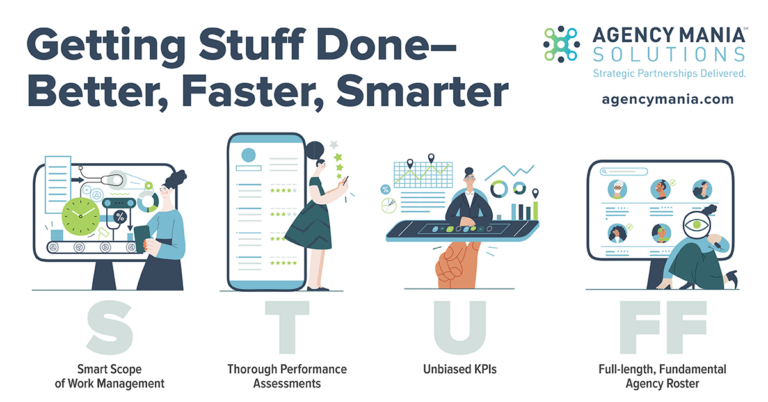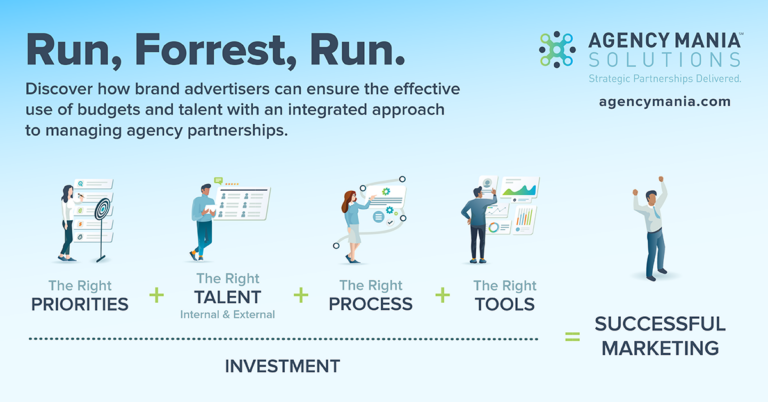Bruno Gralpois is co-founder and principal of Agency Mania Solutions, known by some as the ‘Advertising Love Doctor.’
A former head of global marketing operations at Visa and director of global agency strategy at Microsoft he has advised numerous advertisers on their agency arrangement and is the author of Agency Mania: Harness The Madness of Client/Agency Relationships for High-Impact Results.
He is a former chair of the Association of National Advertisers (ANA) Agency Committee and a faculty member of the ANA School of Marketing.
1/ You suggest that the creative brief can be the cause of major problems in client/agency relationships. Why are they so difficult to get right?
In a recent ANA study, only 27 per cent of agencies believe clients do an adequate job of briefing them on assignments, with zero per cent strongly agreeing. Additionally, 58 per cent of clients think they perform well on briefs. Clearly there is a disconnect between clients and agencies about briefs, which can be a source of conflict right off the bat.
Many advertisers still fail to understand the negative implications that result from poor input briefings. Additionally, without a combination of processes, tools, guidelines and training, the briefing process can be hard to perfect. Additionally, clients in the advertising space often lack the rigor needed to provide an organized set of briefs to agencies – they fail to do a number of things including: use standard templates, get internal approval by important stakeholders, provide actionable information to the agencies, or articulate goals with clarity and define clear success metrics. Missing the mark on these items results in poor guidance and projects that zig and zag unnecessarily.
2/ You also talk about failure to get internal approval and to clearly articulate goals and success metrics. Are these the fault of client or agency – or both?
Vetting the brief with all relevant participants and getting approval from the ultimate decision maker before sending it to the agency or client team is critical. When inclusion from other departments or parties is skipped (which it often is) agencies can potentially get conflicting guidance from client teams with different goals in mind. We remedy this by having clearly defined success metrics and single ownership for who is expected to approve the work.. This process is perfected when only one individual facilitates the collection of feedback to streamline the process and avoid any confusion. Be sure to build in enough time for these cycles – everyone has competing demands of the job – as this part of the process can take longer than expected.
3/ You’ve been referred to as the “Advertising Love Doctor.” Can people really be persuaded to love advertising?
Persuaded to love advertising – probably not. At least, not all of it. What I really hope to do for advertisers is help them navigate their relationships with, in many cases, multiple agencies across the advertising spectrum. My colleagues and several customers started calling me the ‘Advertising Love Doctor’ because, to them, I provide vital relationship advice and methods for being the most productive and efficient when working with agencies. Like our personal relationships, the agency and client relationship can get messy if not backed with effective processes and best practices.. I’ve devoted my career to helping advertisers, CMOs and their teams thrive in relationships with all of their agencies and turn them into productive partnerships. While it might seem a bit tongue-in-cheek, there are relationship-warning signs that advertisers and their agencies miss. I’m here to help diagnose and treat the symptoms – large or small – to put that relationship back on track.
4/ If we accept the importance of creativity in advertising does that also mean that creative agencies are essential to the process? Or are there alternatives?
Creating a space where advertisers and their agencies feel comfortable and open to sharing and brainstorming new ideas is essential. I see situations all the time where folks seem to forget the creative aspect of the briefing process. That process – enabled by the brief – is in many ways more important than the deliverable itself. The thoughtful and creative exchange of information between a client and their agency leads to clarification, refinement and true alignment of expectations. Yes, projects can be started and launched from in-house teams, but the value of an outside creative agency is an extended team of like-minded and motivated professionals who respect the creative process and are committed to delivering the client their best work. Often times, creative agencies leverage their extensive experience to come up with innovative concepts and breakthrough ideas that make them so valuable to their clients.
5/ Which brands would you say have managed the transition from an offline to an online world most skillfully?
Is there such a thing as ‘offline’ anymore? Offline and online worlds have now fully converged. The social media banter and jibes between fast-food chains like Wendy’s and McDonald’s and their social media followers has been a delightful reprieve from the cacophony of brands competing for attention in a crowded space. The brand experience in digital goes far beyond communications and now extends to ecommerce, in-store ordering, customer service, and loyalty programs. These well-known companies have been able to reinvent themselves for decades while seeming to stay relevant. Brands that enable better experiences and remain genuine, no matter the platform, will continue finding success in the digital world.







